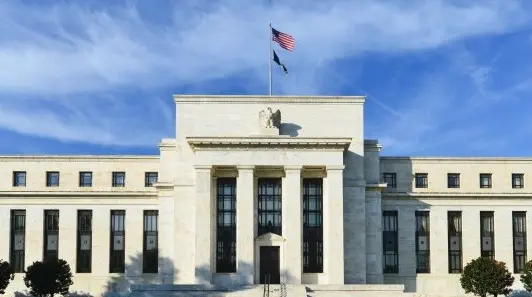Summary: The cryptocurrency market in 2022 has been dominated by macropolitical events and inflation worries, as well as questionable crypto applications; cryptos have been in a heavy downtrend through a large part of the second quarter. The narrative around cryptocurrencies has changed, and many parts of the crypto community are under pressure.
Bitcoin—digital gold, fool’s gold or something else?
Bitcoin was originally created as the first decentralised cryptocurrency as a way of transferring money over the internet, which operates free of central control. Like physical gold, the supply of Bitcoin is limited, and both have been popular in countries with high inflation. Thus Bitcoin has been proposed to be the ‘gold of the 21st century.’ From a technical point of view, the correlation between Bitcoin and physical gold was significant throughout 2020 and into the beginning of 2021, as shown in figure 1.The market events in 2022 have, however, wiped out this narrative, and the correlation between the two is now low. The concerns around using cryptocurrencies as a store-of-value grew even bigger in May when a stablecoin turned out not to be stable. The depegging of TerraUSD—a crypto token supposed to be pegged to the value of $1—raised even larger concerns around cryptocurrency stability.
So what kind of investments are cryptocurrencies then? Looking at the correlation between the Nasdaq-100 Index and Bitcoin in figure 1, the correlation in 2022 is at record high. Thus, crypto investments are behaving more as regular high-risk assets with similarity especially to tech stocks. This applies not just to Bitcoin, but to most major cryptocurrencies. The fact that more professional investors are considering cryptocurrencies for their portfolios causes these crypto investments to fall under a risk management framework, in contrast to the speculative traders during the previous crypto bubble trends. The framework typically reduces portfolio risks in volatile market periods, causing a selloff in cryptos similar to high-risk equities and thus proving that the correlations are high. During these times of high correlations, cryptos are less likely to add any diversification to a portfolio to spread out risk.


The pressure is on in all corners of the crypto community
The crypto headwind in 2022 has increased the focus on whether cryptocurrencies can withstand the pressure and maintain growth in the long run. This requires all parts of the crypto networks to work properly, as well as synergies among these—the crypto traders, the facilitators/developers and validators, not to mention the use cases for the specific crypto token.Crypto users and traders: The sharp decline in crypto markets this year has removed some of the speculators who were riding the crypto uptrends in 2020 and 2021. Using the search activity on Google as a quantification of public interest, we find that the interest in cryptos has faded to moderate levels, as shown in figure 2. Other indicators, however, point in the other direction, as investment in exchange-traded crypto trackers saw record highs in June, showing increased interest from the general equity investor, despite Bitcoin trading at half of its peak value. Also, a Bank of America survey shows that consumer interest remains high, although it must be noted that the survey was carried out in the beginning of June.


Validators: Transactions are verified by validators on the different blockchains, with the ‘miners’ on the Bitcoin blockchain being the most well-known. The miners’ profitability has gone down a lot with crypto prices, reaching levels where the net profitability for running the mining rigs is close to zero. Additionally, an increasing share of the mining rewards is transferred to exchanges instead of personal wallets, signaling a larger intention to sell on a short term. On the other hand, the computational power provided by the miners is only slightly down from the peak, as shown in figure 3, indicating that the miners are showing no sign of capitulation to the price pressure.


One popular application is where customers deposit digital currencies in a company offering high interest rates, and then the company lend out the given coins to earn a return. Regulators have warned that these high interest rates seem ‘too good to be true,’ and 2022 has shown how these businesses can break down in a bear market. One example is the crypto lending company Celsius Network which in mid-June froze withdrawals and transfers for clients, citing ‘extreme market conditions,’ sending a shockwave through the crypto markets.
Summarizing the points above, the crypto stakeholders from users to developers and miners are divided in their outlook for cryptocurrencies over the next couple of months. When it comes to current and potential use cases, the cryptocurrency space is screaming for a proper regulatory framework for doing business and protecting investors.
Crypto bear market—a healthy clean-up?
The sharp decline in the market cap of cryptocurrencies since the November 2021 peak has definitely shaken the crypto community, and the clean-up of the industry may just have started, making it tough for those with unreliable business models, as well as removing speculators and fake project funders who can no longer get quick funding. A major clean-up is however still expected when the US and EU announce a regulatory framework around digital assets, as this will strongly influence the role that cryptocurrencies may have in the future. Furthermore, the crash of the TerraUSD stablecoin and rising concerns around decentralised finance services may cause the regulation to turn out to be stricter than originally expected.
Cryptocurrencies are currently in limbo, awaiting changes in the general macroeconomic sentiment, regulation and institutional adoption, not to mention the ongoing research into central bank digital currencies as a potential competitor. Pessimists see 2022 as the beginning of a crypto winter, where lower crypto prices and reduced engagement in crypto applications will decrease hand in hand in a negative feedback loop. On the other hand, optimists hope for a positive spiral if the investment appetite in cryptos increases, driving up the price and eagerness to engage in crypto technologies. They see the bear market as an opportunity to prepare for the next bull run and as a healthy clean-up of the crypto space, which can bring back some of the stability and reliability that were lost during the first half of 2022.
























































































